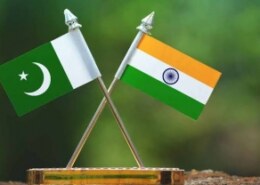Talk about India’s role in regard to small island developing states (SIDS) in the region since security concerns in the South-West Indian Ocean are becoming more frequent and in different forms. (Answer in 250 words)
Answer: Bhutan has maintained a special relationship with India since the signing of the Treaty of Friendship and Cooperation in 1949. Though the two neighbours have a close civilizational, cultural and economic relationship, there are some challenges in the relationship, as given below: Chinese infRead more
Answer:
Bhutan has maintained a special relationship with India since the signing of the Treaty of Friendship and Cooperation in 1949. Though the two neighbours have a close civilizational, cultural and economic relationship, there are some challenges in the relationship, as given below:
- Chinese influence: China has disputes regarding many territorial areas with Bhutan. Dominance in the region by China can threaten the Siliguri Corridor, a narrow stretch that connects the Indian mainland with the North-Eastern states.
- Issues in hydropower trade: India’s imports of hydropower electricity from Bhutan that is cheaper than the market prices, changes in power purchasing policy, refusal to admit Bhutan into the National Power Grid, etc. have created a rift in the relationship.
- Economic issues: Use of Indian labour and goods, rather than local, for projects executed by India in Bhutan has invited criticism from Bhutan. Also, loans, grants and lines of credit by India are deemed economic imperialism by some critics in Bhutan.
- Delay in project completion: India has failed to deliver projects on time and in the volumes expected, and this has increased Bhutan’s costs and the size of its debts to India.
Despite these challenges, recent developments suggest that continuity still looms large in the Indo-Bhutan relationship:
- India has extended the Standby Credit Facility to Bhutan at a reduced interest rate and extended the settlement period, and provided an additional currency swap support of USD 200 million.
- India has already released about 90 percent of committed plan assistance to Bhutan under its 12th Five Year Plan. India has also agreed to step up support for Bhutan’s 13th Five Year Plan.
- Both sides expressed satisfaction that projects totalling 2136 MW, which have been jointly set up, are functioning well. Recently, India handed over 720 MW Mangdechhu HEP to Bhutan.
- India also agreed to positively consider Bhutan’s request for sale of power into the Indian Energy Exchange.
- India agreed to extend the energy partnership and will provide technical and financial assistance in the area of non-hydro renewables, such as solar and wind as well as in green initiatives for e-mobility.
- India has assured supply of critical commodities to Bhutan such as petroleum, fertilizers, and coal and is also considering setting up the first Integrated Check Post along the India-Bhutan border.
- Exceptional progress has been made in the space sector cooperation, including the recent launch of the first satellite jointly developed by India and Bhutan and the inauguration of the satellite’s ground earth station in Thimphu.
The relationship between India and Bhutan is based on the pillars of trust, goodwill and mutual understanding. It is necessary to address the concerns of Bhutan, specifically related to fulfilling the aspirations of Bhutanese youth in order to fully realise the potential of the longstanding development partnership between the two countries.
See less

The economic crisis in Sri Lanka has indeed had significant repercussions beyond its borders, particularly affecting neighbouring countries like India. Here's and analysis of how India has been impacted and the steps taken to assist Sri Lanka: Repercussions for India:- 1. Trade and economic lRead more
The economic crisis in Sri Lanka has indeed had significant repercussions beyond its borders, particularly affecting neighbouring countries like India. Here’s and analysis of how India has been impacted and the steps taken to assist Sri Lanka:
Repercussions for India:-
1. Trade and economic links: India and Sri Lanka have strong economic ties, including bilateral trade and investment. Any economic Downturn in Sri Lanka affects this trade flows, impacting Indian businesses and economic interest.
2. Regional stability: Sri Lanka’s economic instability can affect regional stability in South Asia. It can lead to political unrest or migration flows that may indirectly impact India security and economic stability.
3. Tourism: both country share tourist traffic. A downtown in Sri Lanka’s economy can affect tourism flows between the two countries, impacting revenue for Indian businesses involved in tourism
Steps taken by India to assist Sri Lanka:-
1. Financial assistance: India has extended financial assistance to Sri Lanka during its economic crisis. This included loans, credit lines, or direct financial aid to help stabilize the Sri Lankan economy.
2. Trade facilitation: India has likely felicitated trade and export import arrangements to ensure trade flows despite sri lanka’s economy challenges.
3. Diplomatic engagement: India has engaged diplomatically with Sri Lanka to understand the root causes of the economic crisis and to provide diplomatic support for Sri Lanka in international forums.
4. Infrastructure projects: India has ongoing infrastructure projects in Sri Lanka, such as ports and and highways. This projects contribute to Sri Lanka’s economic development and stability.
5. Humanitarian assistance: in times of crisis, India often provides humanitarian aid, including medical supplies, food aid, and other essential supplies to help mitigate the impact on Sri Lanka’s population.
Conclusion
The economic crisis in Sri Lanka has implications the stretch beyond its borders, affecting regional stability and economic ties, including those with India. India, recognising the importance of a stable Sri Lanka for its own interest, has taken several steps to assist Sri Lanka during this challenging period. This steps under score the strong bilateral relations and India’s commitment to supporting regional stability and development in South Asia.
See less